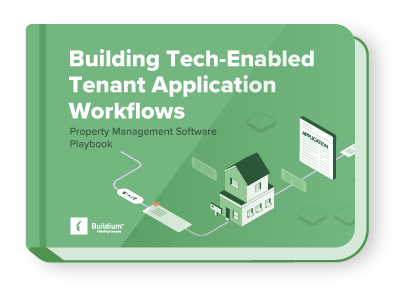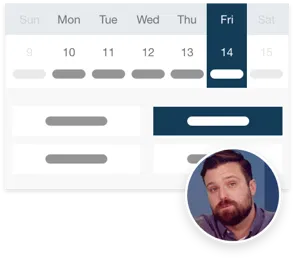Lease options aren’t as common as traditional lease agreements, but when they show up, they require a closer look. Whether you’re managing a rental for a property owner or working with a tenant interested in long-term flexibility, understanding lease options can help you protect your client’s investment and navigate more complex rental arrangements.
In this post, we’ll break down what a lease option is, how it works, and what property managers need to consider before helping implement or oversee one.
What Is a Lease Option?
A lease option—also called a lease with option to purchase—is a rental agreement that gives the tenant the right (but not the obligation) to buy the property at a later date, usually at a price agreed upon in advance.
This type of agreement is essentially two contracts combined:
- A standard lease agreement that outlines the rental terms
- An option agreement that grants the tenant the right to purchase the property during or at the end of the lease term
Lease options are typically used in residential real estate when:
- A tenant wants to buy a home but isn’t financially ready yet
- A seller is open to flexible terms and can benefit from rental income while marketing the home
- An investor wants to lock in a potential sale while holding the property short term
It’s important to note: the “option” to buy is a right, not an obligation. The tenant doesn’t have to purchase the property—but if they want to, they’ll have the exclusive opportunity within the timeframe agreed upon.
How Does a Lease Option Work?
A lease option is typically structured like this:
- Lease term: 1 to 3 years is common
- Option fee: The tenant pays an upfront, non-refundable fee (usually 1–5% of the purchase price) for the right to buy
- Purchase price: Often locked in at the beginning of the lease
- Monthly rent: May be higher than market rate, with a portion credited toward the purchase if the option is exercised
- Option expiration: The option to buy must be used before a specific deadline
For example:
A tenant signs a two-year lease with an option to buy the home at $300,000. They pay an upfront $3,000 option fee and agree to $2,000/month rent, with $300/month applied toward the purchase price if they decide to buy.
Lease Option vs. Lease Purchase: What’s the Difference?
These terms sound similar, but there’s an important distinction:
| Feature | Lease Option | Lease Purchase |
| Purchase required? | No—tenant has the option to buy | Yes—tenant must buy |
| Option fee? | Yes, non-refundable | May or may not apply |
| More flexibility? | Yes | Less |
| Common use case | Tenants unsure about buying | Tenants committed to purchase, just not ready yet |
A lease purchase binds the tenant to buy at the end of the lease. A lease option simply gives them the opportunity. Property managers should make sure both parties understand which type of agreement is being used.
Pros and Cons of Lease Options
For Landlords/Property Owners:
Pros:
- Earn rental income while keeping a potential sale in motion
- Attract serious tenants who may be more invested in maintaining the property
- Lock in a future sale price in uncertain markets
Cons:
- Property may be tied up for years without a guaranteed sale
- Tenants might not exercise the option, requiring a resale later
- Potential for disputes if terms aren’t clearly defined
For Tenants:
Pros:
- Time to improve credit, save for a down payment, or test out the home
- Locked-in price in case property values rise
- Less pressure than committing to buy upfront
Cons:
- Higher rent and upfront option fee
- Risk of losing the option fee and credits if they decide not to buy
- Responsibility for property upkeep may be greater than a standard lease
What Should Property Managers Know?
Lease options introduce complexity into rental management. If you’re managing a lease-option property, you’ll want to:
- Understand the full agreement: Make sure you have copies of both the lease and the option contract. These documents must be aligned and clearly outline responsibilities.
- Track deadlines carefully: Missing the option period can lead to disputes. Know the trigger dates for exercising the option and build reminders into your systems.
- Communicate with both parties: Make sure tenants understand what they’re signing—and help owners stay realistic about timelines, sale expectations, and upkeep responsibilities.
- Clarify who handles maintenance and repairs: Some lease option agreements shift more responsibility to the tenant. Spell this out clearly.
- Document rent credits (if any): If rent payments include purchase credits, keep detailed records in case of disputes at the end of the term.
Legal Considerations
Lease options are more complex than standard leases and may be governed by different rules depending on your state. Key things to keep in mind:
- Option agreements should be in writing.
- The option fee should be clearly labeled as non-refundable (if that’s the case) and separate from rent or deposit payments.
- The lease and option agreement should not conflict—the lease can’t say “no pets” while the option agreement says otherwise.
- Consult legal counsel when drafting or reviewing a lease option—especially if you’re managing on behalf of an owner.
In some states, if a lease option is not structured carefully, it could be considered a disguised sale, triggering legal and tax consequences.
Frequently Asked Questions
Does the tenant have to buy the home?
No. In a lease option, the tenant has the right—but not the obligation—to purchase the property.
What happens to the option fee if the tenant doesn’t buy?
In most cases, the option fee is non-refundable. The landlord keeps it, even if the tenant doesn’t exercise the option.
Can the landlord sell the home to someone else during the lease term?
Not if a lease option is in place. The option gives the tenant exclusive rights to buy the property during the agreed period.
Is a lease option the same as rent-to-own?
They’re often used interchangeably, but not always accurately. “Rent-to-own” is a broader term and may refer to either a lease option or a lease purchase. Clarify the terms in writing.
Should a property manager be involved in drafting a lease option?
You can help facilitate communication, but legal professionals should draft or review the agreement. Your role is to ensure the lease is enforceable, the terms are followed, and rent/maintenance is handled correctly.
Read more on
